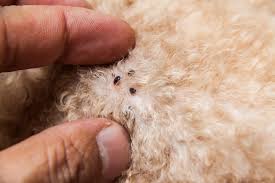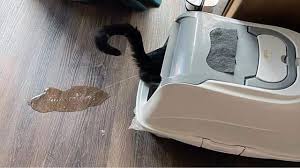Have you ever wondered what your veterinary office would like you to know? I polled Beacon’s
staff to find out tidbits that we wish you knew, and here are the results:
1. When your dog is slurping on his feet at night, this is a sign of allergies, not a behavioral
issue! Foot licking and chewing are major signs of skin allergies including food and
environmental sensitivities. (Surprisingly, another sign of allergies is ear infections.)
2. On the flip side, just because you DON’T see fleas doesn’t mean your dog or cat doesn’t
have them. If your pet has itching and hair loss at the base of the tail, along the caudal
spine, or on the inside of the thighs and they are not on regular flea prevention, then
fleas are the likely cause.
3. Once you start seeing live fleas on your pet, there is a significant flea problem. Both cats
and dogs will groom themselves to remove live fleas, and you will often not see fleas
until the infestation is severe, and the animal cannot keep up with grooming. Once you
have a flea infestation, treating the yard and house may also be necessary.
4. On that note, flea, tick, and heartworm prevention should be given year round in the
Southeast. It no longer gets cold enough to keep parasites at bay during the winter
months. If the temperature is at 35 degrees or above, ticks will come out to feed. There
were only 3 days last winter in which it didn’t get above 35 degrees. Stopping during the
winter months puts your dog or cat at risk for infection. Prevention is much cheaper than
treatment for tick-borne illness and heartworm infection.
5. Checking the registration on your microchip yearly is a good idea. It’s important to
understand that microchips are not GPS trackers. If found, your pet can be scanned at
any local clinic or humane society. Having current contact information is critical for
bringing your pet home.
6. The cost of dog food doesn’t necessarily indicate quality. We continue to recommend the
“Big 4” diets, which have been around for over 75 years and have excellent quality
control. These include Purina, Hill’s, Royal Canin, and Iams/Eukanuba. Newer, boutique
diets like grain-free, exotic foods and fresh diets have been linked to health problems
such as dilated cardiomyopathy and bladder stone formation.
7. When a cat urinates outside a litterbox, it’s not to spite you, even if it’s in your shoes!
Cats urinate outside of the box for a variety of reasons, and these usually include a
health problem such as cystitis or bladder infection. In some cases, it is behavioral, but
first and foremost, illness must be ruled out.
8. Retractable leads are dangerous. People and pets have suffered injuries due to the
retracting nature, and pets have been attacked when a pet was allowed to wander too
far to the end of a leash. A well-fitted collar and appropriately-sized leash are best.
9. Vomiting in cats is not normal. If your cat vomits more than once a month, this can
indicate an array of concerns, and you should have your cat evaluated.
Did any of these surprise you? Do you have any tips that you wish WE knew?



